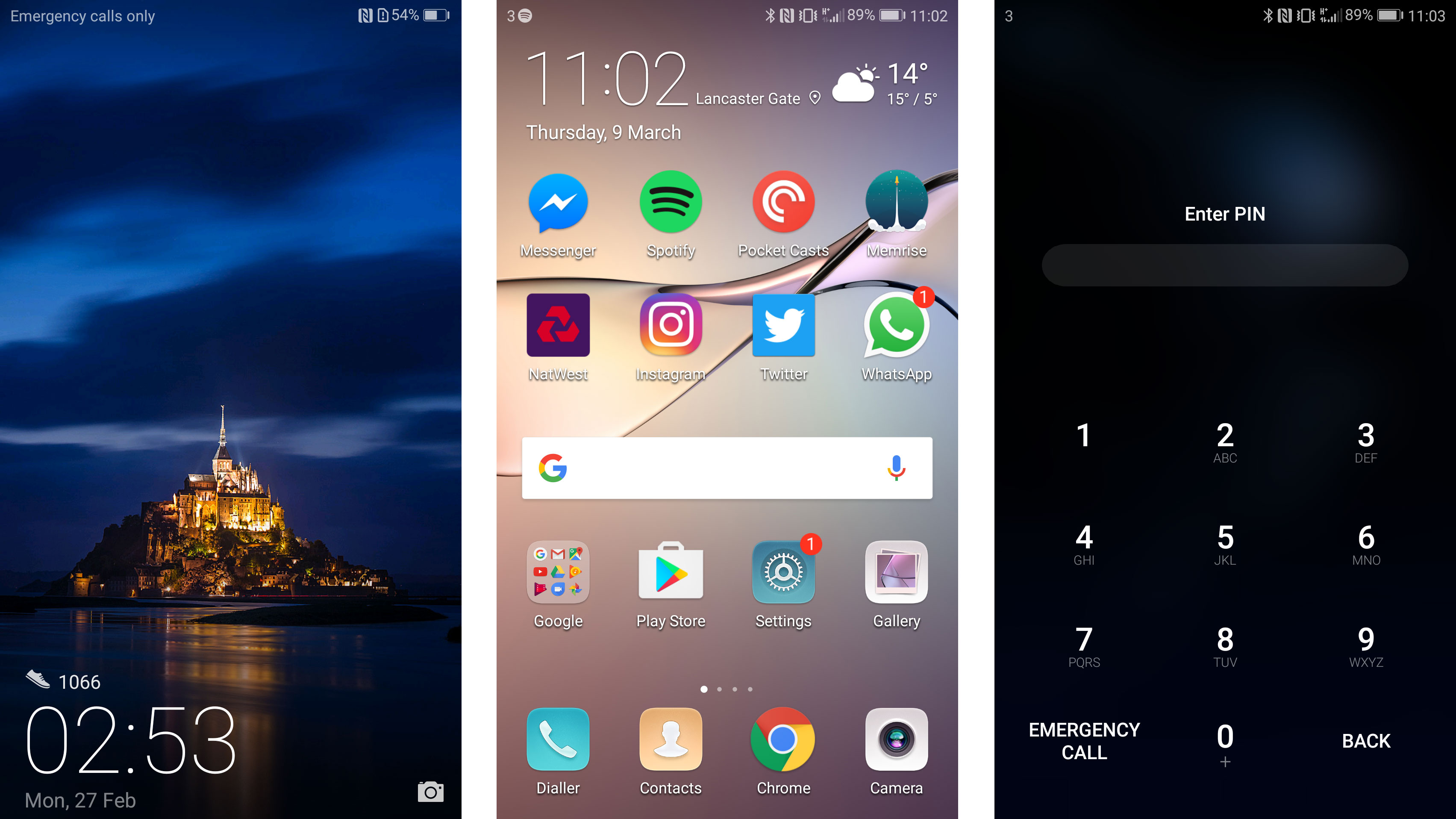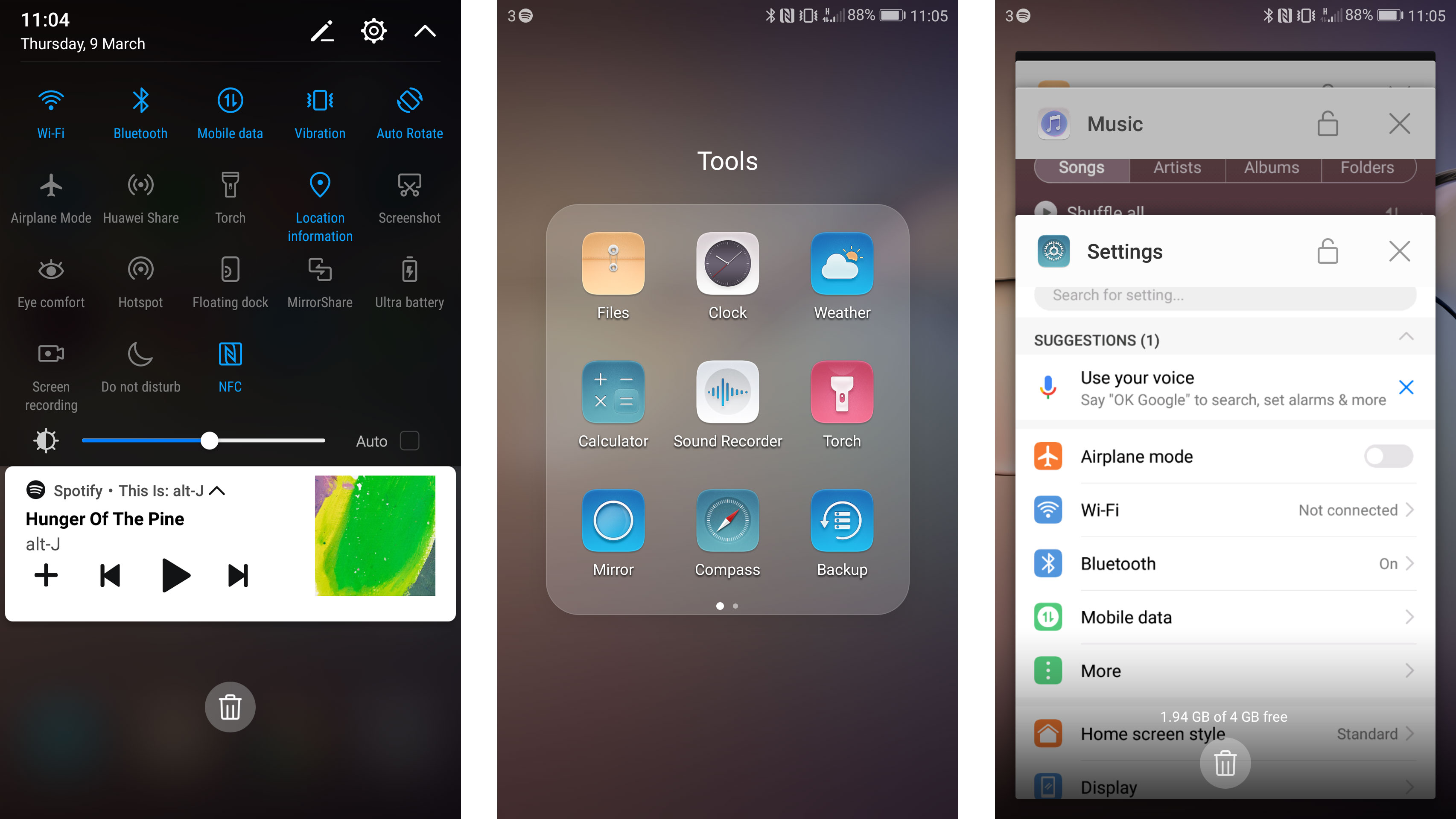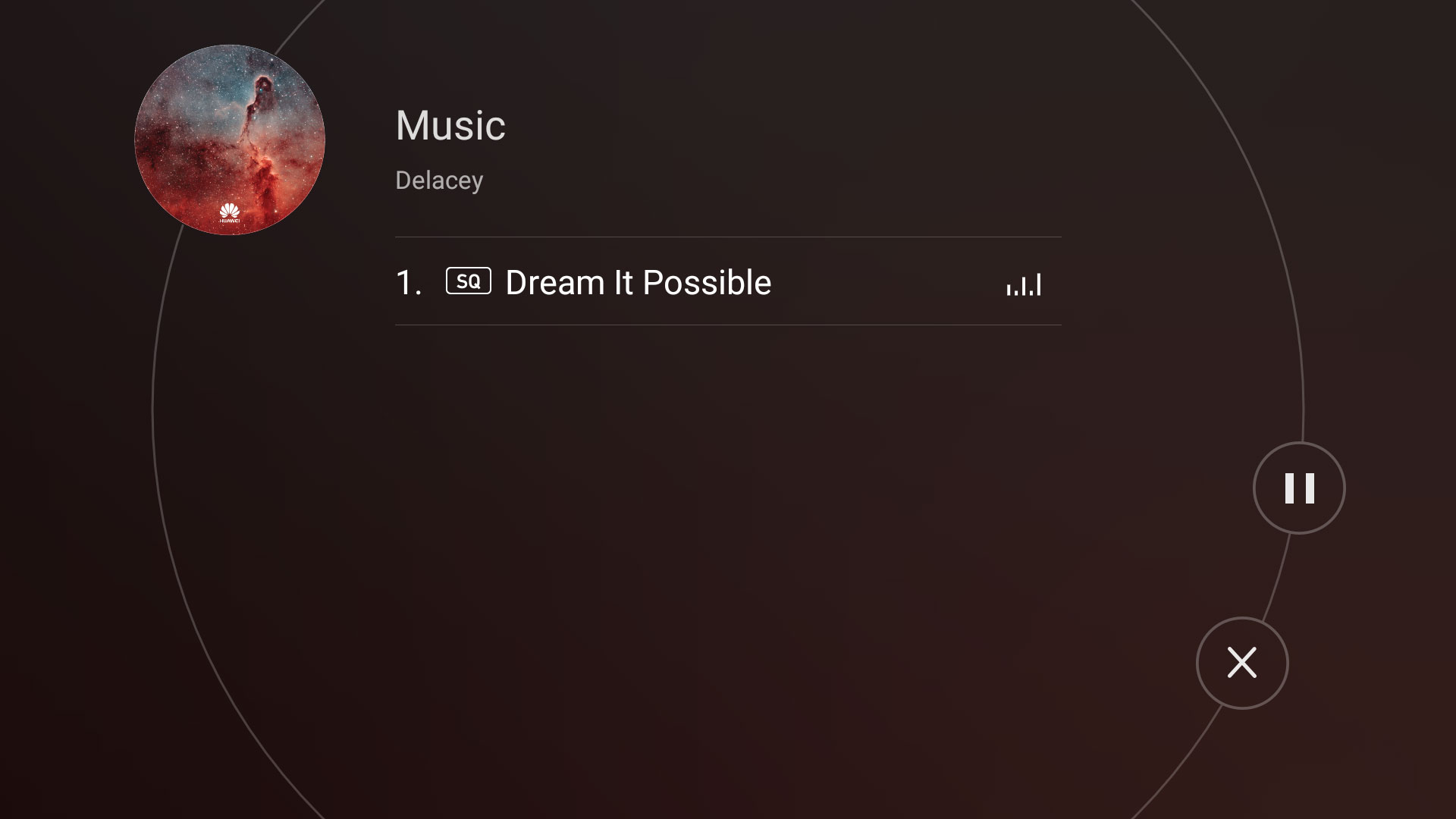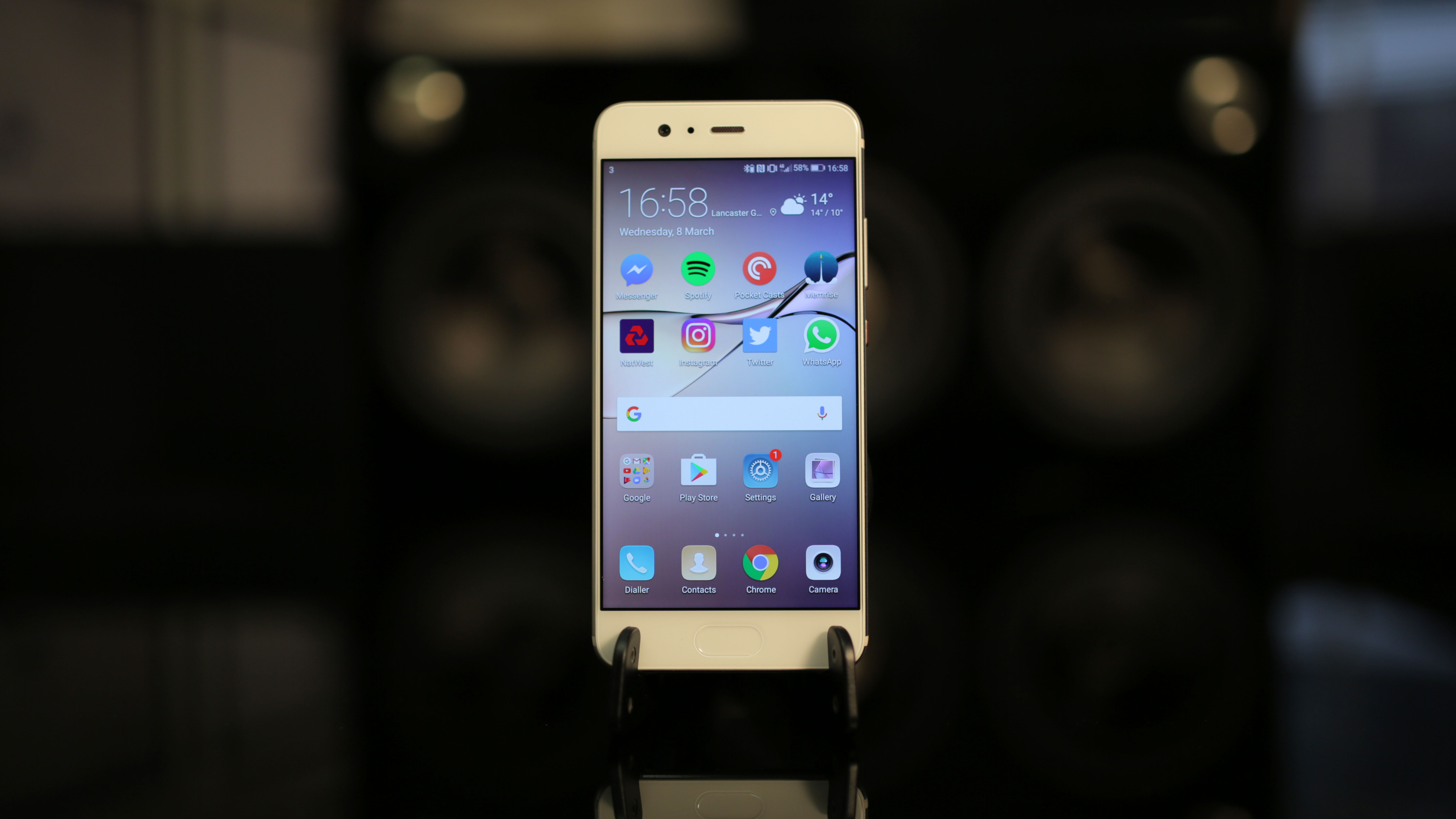Why you can trust TechRadar
Interface and reliability
- Comes with the latest Android 7 software onboard
- Huawei also includes its Emotion UI 5.1 overlay
- No Google Daydream support
The Huawei P10 comes packing the latest software from Google – that’s Android 7 Nougat – but Huawei has stuck its Emotion UI 5.1 software on top to give the OS a different look and offer up a variety of additional features.
Emotion UI hasn’t always been popular in the West, but some major changes have been made over the past few years which have made it look quite different, so it might be worth another look.
One of our biggest complaints about the Emotion UI look was the lack of an app drawer, but you can now have that feature if you want it.

By default all your apps will be spread over your home screens, much like on iOS, but you can now opt to have an app drawer in the settings, which is a big help if you want to be able to organize your screens.
It does still feel like there are a lot of apps on the Huawei P10 that you won’t use, such as Huawei’s HiCare and HiGame services. Plus there’s also a Compass app, which is largely useless if you’re not into orienteering. But these are mostly filed away in different folders, and there are no extra apps or games that will get in the way when you first start the phone up.
Our biggest problem with the software on the P10 is there’s no sign of Google Daydream support. This is one of the best features in the latest version of Android, but it seems Huawei has no intention of including on the P10.

Daydream won’t be compatible with the Huawei P10 – so if you buy this phone you won’t be able to experience VR in the same way as you could on the Google Pixel or ZTE Axon 7.
We would also expect Huawei to keep the P10 up to date with the latest software for at least the next two years. Fingers crossed Android O will come to the phone quickly after it has been released by Google.
Music, movies and gaming
- Lots of apps pre-installed to help you consume media
- Speaker, headphone jack and Bluetooth for listening to music
- A whole 64GB of storage to fill up with apps and media
The Huawei P10 should suit most people nicely for watching movies, listening to music or playing games.
Huawei has included a dedicated Music app for playing audio files you upload directly to the phone, plus there’s Google Play Music already installed on the device. We found ourselves downloading other streaming apps such as Spotify and podcast launchers, though, to get a full audio experience.

Bluetooth headphones connect easily to the P10, and during our time using the phone we had perfect audio over the connection.
There’s also a 3.5mm headphone jack on the bottom of the phone, so you can use wired headphones too – and if you like you’re headphones wired that’s a definite upside to buying the P10, with manufacturers such as Apple, HTC and Motorola dropping that feature on recent handsets.
The 5.1-inch Full HD display is great for watching movies and videos, and the phone’s size means it’s easy to hold while viewing, although you may want a slightly bigger screen if you’re going to be watching a lot of video – the P10 Plus and its 5.5-inch QHD resolution display may suit you better.

There’s a Videos app included on the P10 for playing video files you’ve put on your phone, while you can also use YouTube or Google Play Movies and TV to watch content.
The Huawei P10 comes with 64GB of storage onboard, and supports microSD cards up to 256GB if you need more than that. When you boot the phone up you’ll find 11.5GB already used for the included software, but you should still have more than enough room for a couple of movies as well as all your apps and games.

Gaming on the Huawei P10 is also an enjoyable experience. We found it the perfect size to hold when commuting, although it can be a little difficult to see text within games if you’re used to having a larger phone.
There’s a powerful processor and a lot of RAM behind the P10 that will mean gaming performance keeps pace with other recent flagship devices.
There are better devices out there for hardcore phone-gamers, but we played a lot of demanding games on the Huawei P10, and everything ran smoothly.
Benchmarks and performance
- Poorer benchmarking performance than the Huawei P9
- Still works exactly how you'd like it to though offering a slick experience
Huawei has included its own HiSilicon Kirin 960 chipset inside the Huawei P10, the same processor we saw in the Huawei Mate 9.
Here it’s paired with 4GB of RAM, and this combo will easily run all the latest apps and games you’ll want to be using. During our time with the phone we were never particularly disappointed with its performance, with everything loading quickly and no app crashes.
Watch the video below to see how the Huawei P10 compares to the Huawei P9 in terms of speed...
However, if you really push the performance envelope – by playing graphically demanding games for example, you’ll find the P10 is capable of handling it but it won’t be as snappy as processors inside the Samsung Galaxy S7 Edge for example.
When we ran our benchmarking test on the Huawei P10 the results were actually a little disappointing – in fact the P10 returned a dramatically lower score than the Huawei P9.

The P10 turned in an average multi-core score of 5888, while last year’s Huawei P9 scored 6300. The P10 didn’t do that much better than the Mate 9, which came in at a lowly 5815.
Considering the Galaxy S7 Edge scored 6542 and the Huawei P9 wasn’t far behind, the Huawei P10 hasn’t done particularly well in the raw numbers.
In day to day use, though, we found the Huawei P10 performed perfectly well, so you shouldn’t be too worried if you’re just looking for a phone that can handle everyday tasks such as social media or running a game of Pokemon Go.
Current page: What’s it like to use?
Prev Page Introduction, price and design Next Page Battery life and cameraJames is the Editor-in-Chief at Android Police. Previously, he was Senior Phones Editor for TechRadar, and he has covered smartphones and the mobile space for the best part of a decade bringing you news on all the big announcements from top manufacturers making mobile phones and other portable gadgets. James is often testing out and reviewing the latest and greatest mobile phones, smartwatches, tablets, virtual reality headsets, fitness trackers and more. He once fell over.


